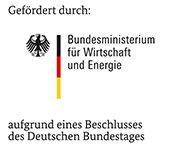253 ZN

| Period: | 01.04.2007 - 31.12.2009 |
|---|---|
| Partner: | Prof. Dr. J. Rösler TU Braunschweig |
| Funder: | AiF |
| Project Manager: | Dr. Sigrid Benfer |
| Research Group: | Corrosion |
Introduction
Due to the combination of low density and high strength titanium alloys like Ti6Al4V are widely used in mechanical engineering, especially in the fields of aerospace and medical engineering. A common operation in manufacturing titanium parts is machining, particularly if complex geometries like blisks (= bladed disks) or parts of heat exchangers have to be produced. Machining of titanium alloys, however, involves high production costs because of their poor machinability. As a result of intense machining and chip formation studies as well as parameter studies in a finite element simulation of the cutting process, a new free machining alloy with improved machinability was developed at the Institut für Werkstoffe of the Technische Universität Braunschweig by adding lanthanum to the standard alloy Ti6Al4V. The aim of the project is to investigate the microstructure, the mechanical and corrosion properties of the new alloys in dependence of the amount of lanthanum and the resulting microstructure of the material, to introduce the new free machining alloys into industrial applications.
Results
By alloying the standard Ti6Al4V ELI with lanthanum contents between 0.9% and 2.8% an improved machinability was achieved by reducing the chip length up to a factor of 100. The tensile strengths of the lanthanum containing alloys are slightly higher compared to the standard alloy, as the lanthanum particles mainly distributed on the grain boundaries lead to smaller grains during casting, deformation and ageing (Hall-Petch effect). The ductility is reduced. Cast alloys exhibited a martensitic microstructure. The addition of lanthanum to the standard alloy only changed the grain size (smaller grains) but not the general microstructure. The thermo-mechanically treated samples exhibit a Widmannstätten structure if there was no further annealing after the deformation process. Otherwise the microstructures showed some transformation towards a duplex-like structure, but the lanthanum hindered the full transformation to equiaxed α-grains surrounded by transformed β-phase. The corrosion properties of the new alloys were investigated by electrochemical methods. Long-term open circuit potential measurements in 1.5 % NaCl solution and artificial saliva indicated the formation of a passive layer by an anodic shift of the potential. The presence of fluoride ions hindered the passivation due to corrosive attack. Investigations with potentiodynamic polarization showed that in NaCl solution freshly ground lanthanum containing alloys exhibited slightly higher current densities than the reference alloy (Ti6Al4V). The increased current density to some extent depended on the lanthanum content and could be attributed to the dissolution of lanthanum. All alloys showed a similar behaviour in artificial saliva and after passivation. Only low current densities were measured over the whole potential range. The presence of fluoride ions led to a distinct increase of the current density. The corrosive attack also hindered the formation of a passive layer. EIS measurements confirmed the results of the other methods. The formation of passive layers, which is indicated by a change in the phase angle at lower frequencies and increasing impedance values (Nyquist plot), is observed for freshly ground samples in electrolytes without fluoride. In the presence of fluoride ions the corrosion reaction is the prevailing process. Therefore, low impedance values and lower phase angles were measured at low frequencies.
Further work
The electrochemical investigations and corrosion experiments will be extended to other corrosive media (e.g. H2SO4 ). In addition analytical tests of the electrolyte solutions after the potentiodynamic experiments will be carried out to estimate the kind and amount of dissolved corrosion products. The influence of the corrosive attack onto the mechanical properties of the alloys will be investigated by tensile tests. Further electrochemical measurements with thermo-mechanically treated samples are planned to investigate the effect of the deformation rate and the microstructure on the corrosion properties. Therefore, in future also Scanning Kelvin Probe Force Microscopy (SKPFM) will be implemented for local corrosion measurements. This will help to correlate the corrosion properties with the microstructure of the alloys.
back
Das IGF-Vorhaben Nr. 253 ZN der Forschungsvereinigung DECHEMA e.V., Theodor-Heuss-Allee 25, 60486 Frankfurt am Main wurde über die AiF im Rahmen des Programms zur Förderung der industriellen Gemeinschaftsforschung (IGF) vom Bundesministerium für Wirtschaft und Energie aufgrund eines Beschlusses des Deutschen Bundestages gefördert.
Contact |
| Dr. Sigrid Benfer |
| Telefon: +49 69 / 75 64-382 E-Mail: benfer |
Publications |
| S. Benfer, C. Siemers, P. Jencus, J. Rösler, W. Fürbeth Proc. Eurocorr 2008, Edinburgh (2008), CD, Paper 1115 |
| S. Benfer, C. Siemers, J. Rösler, W. Fürbeth ECS Transactions 25(37) (2010) 3-15 |